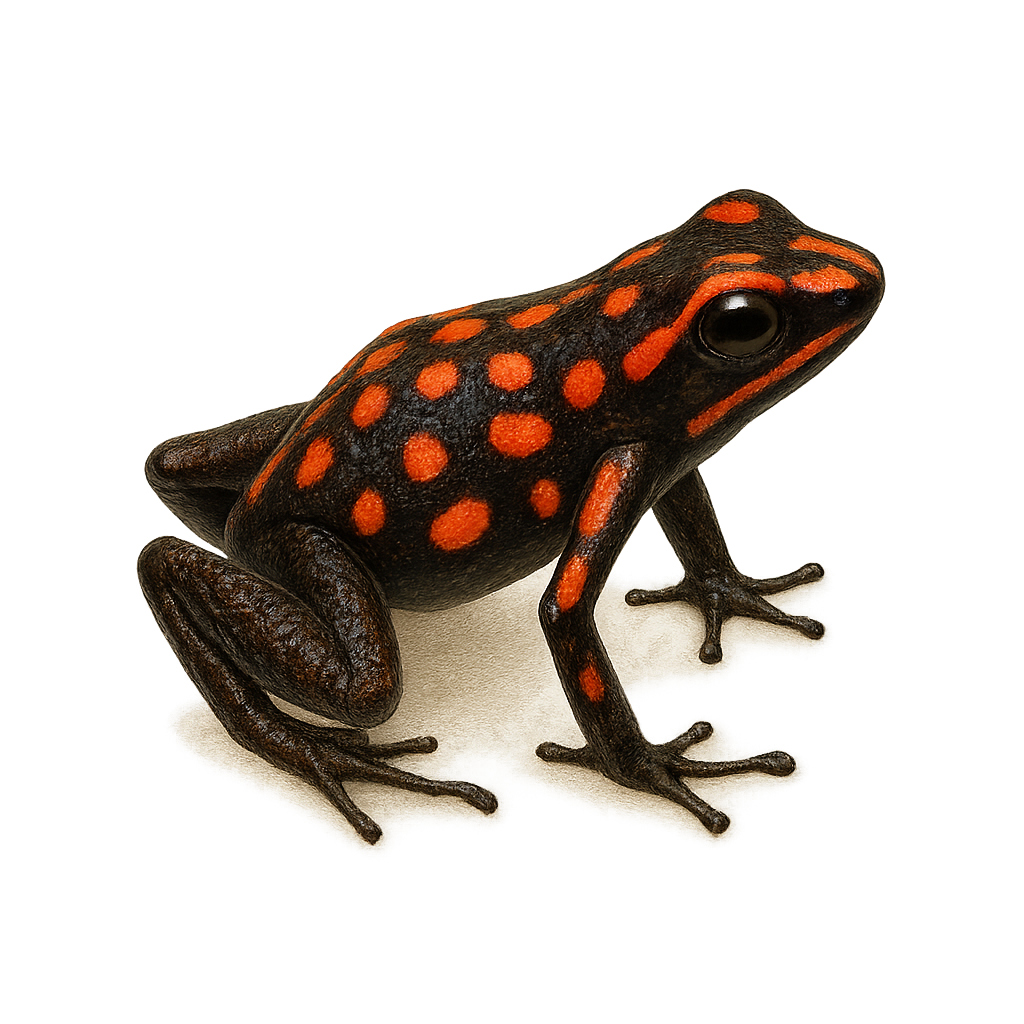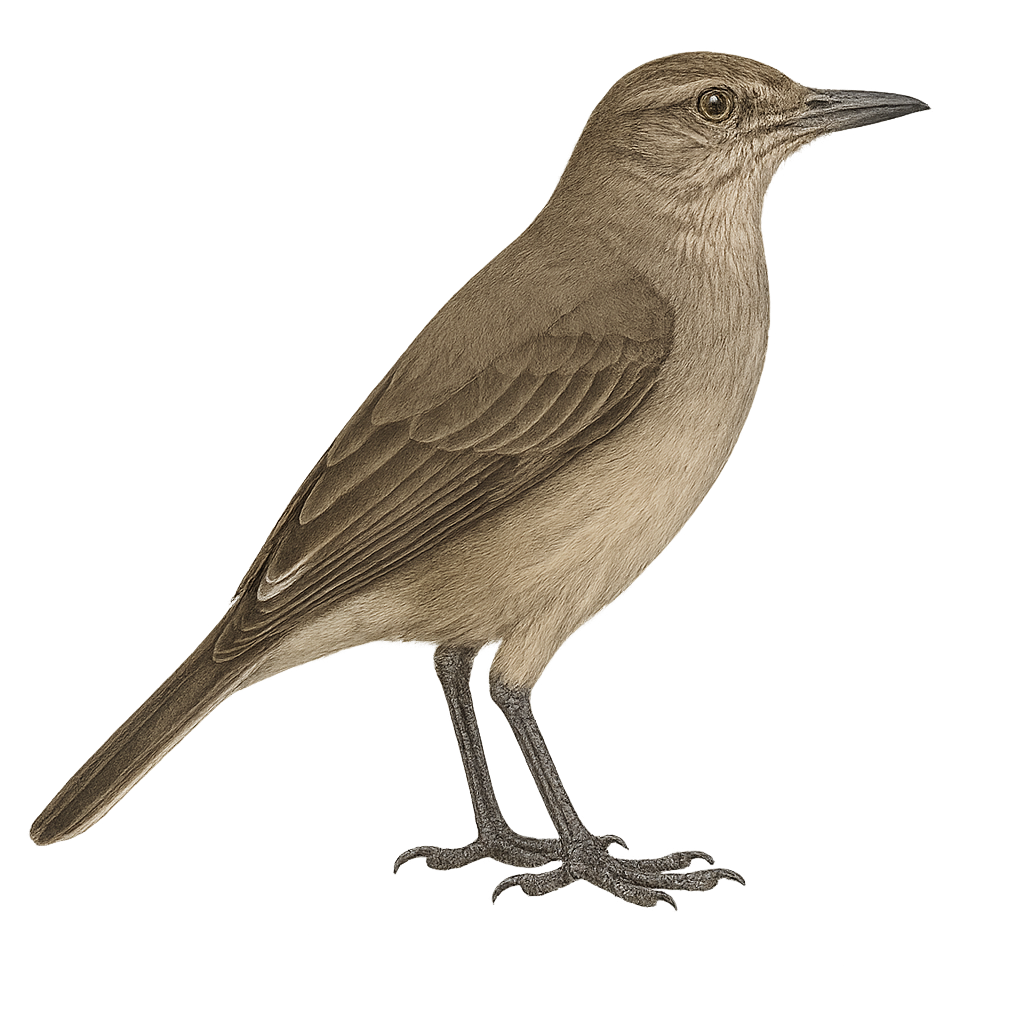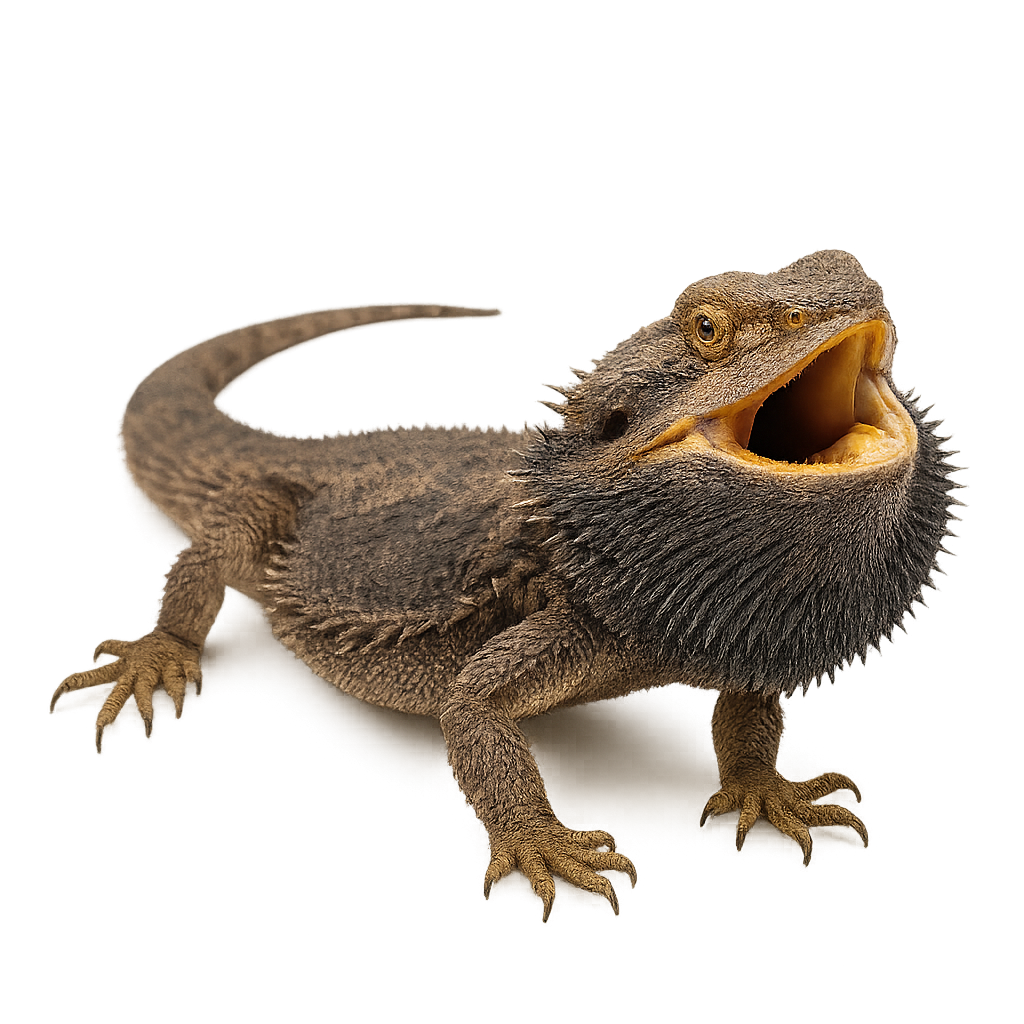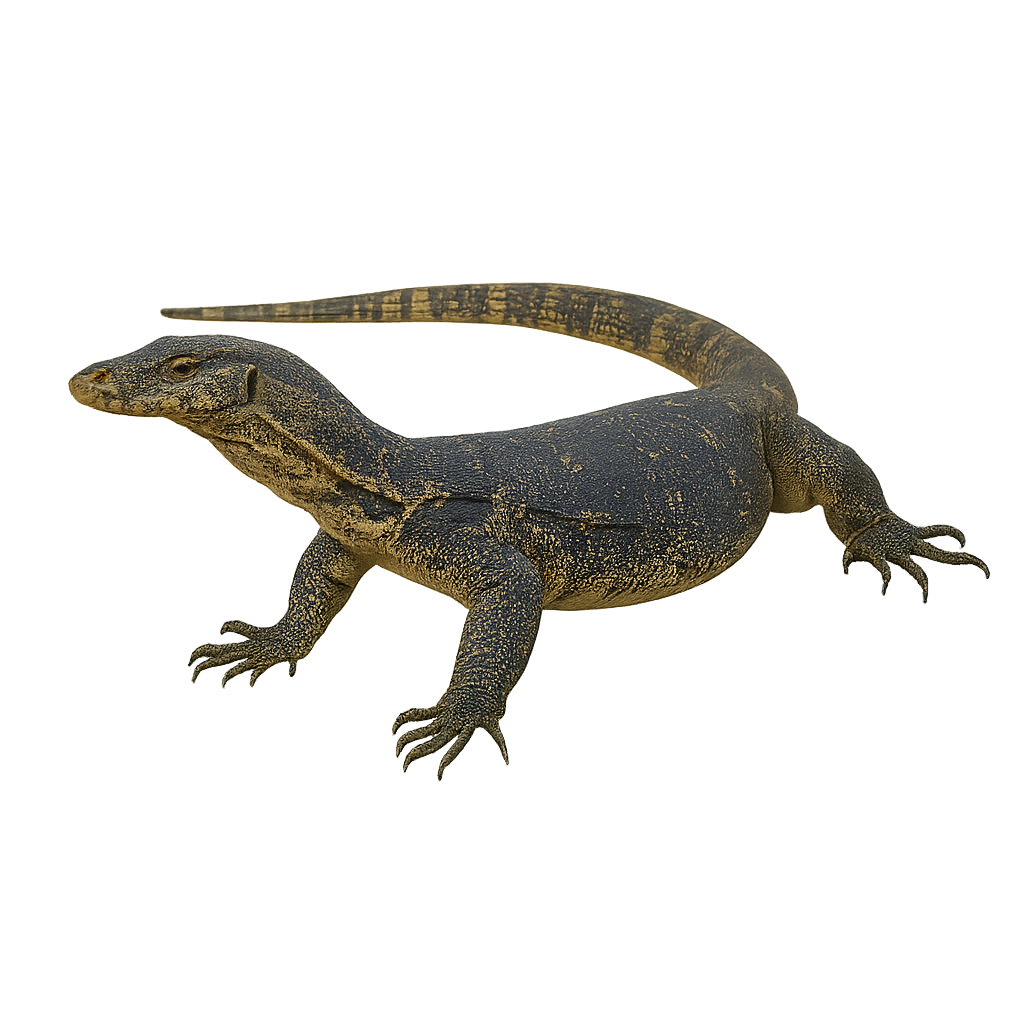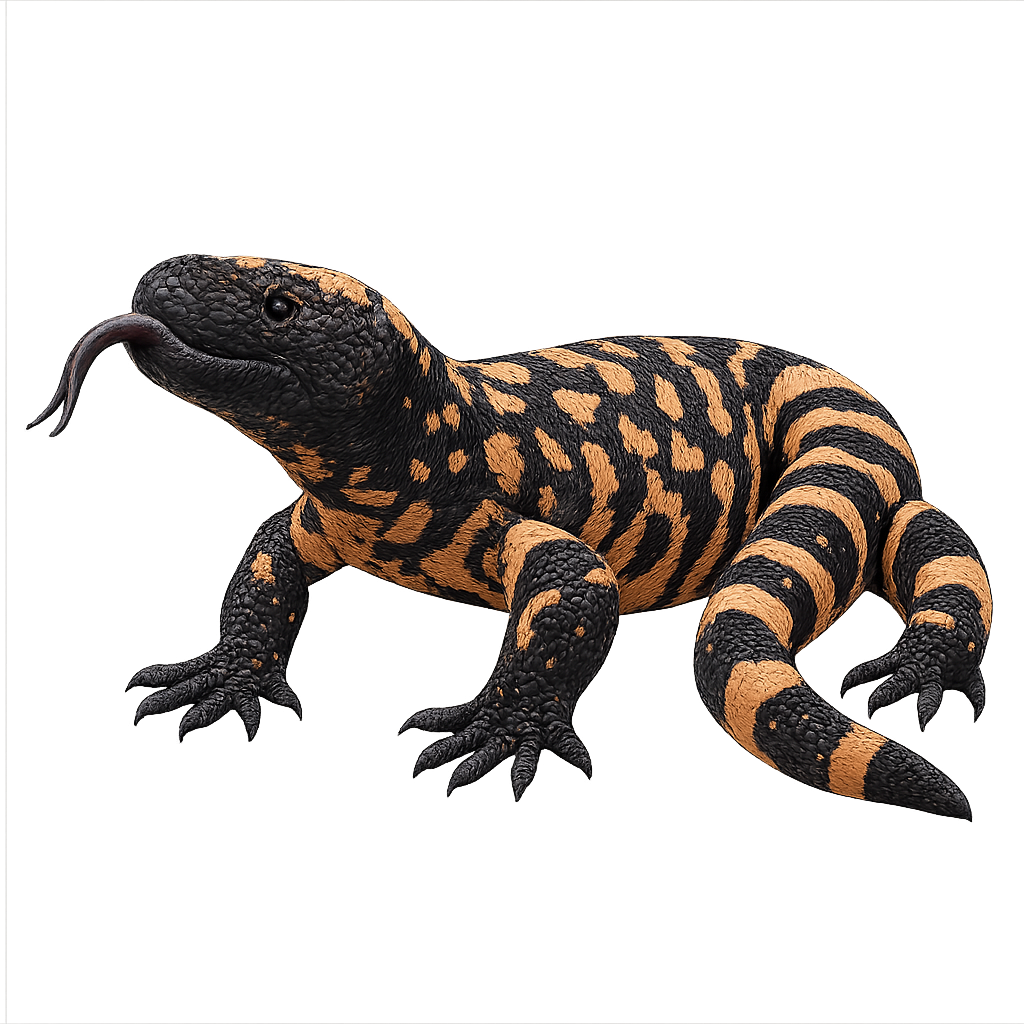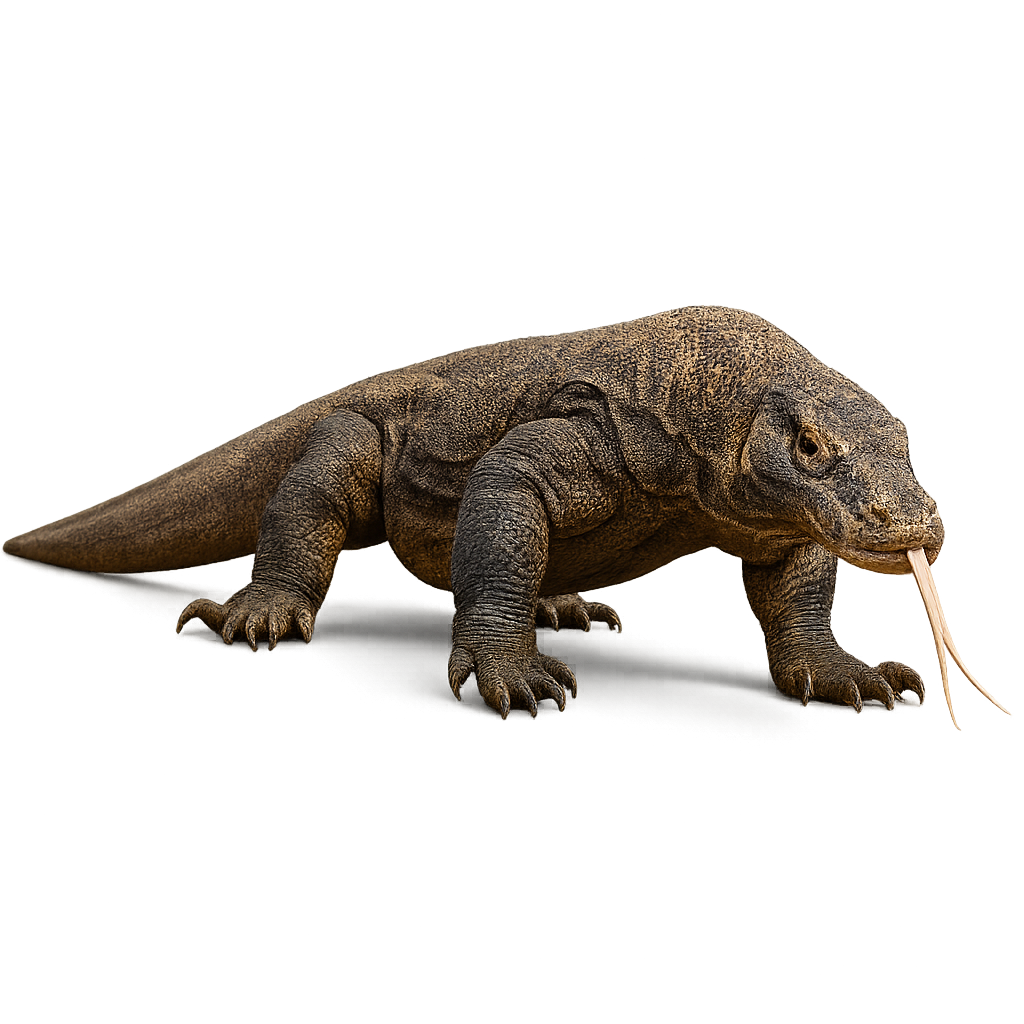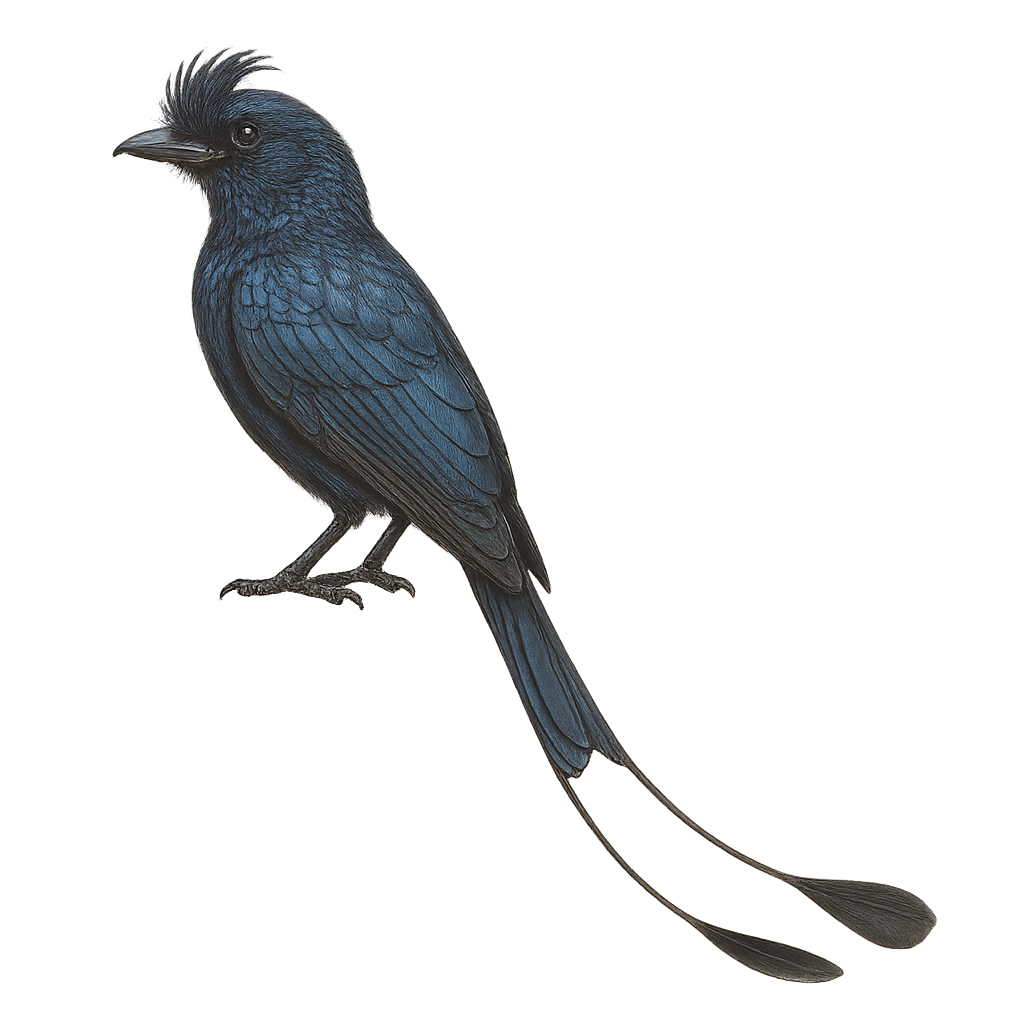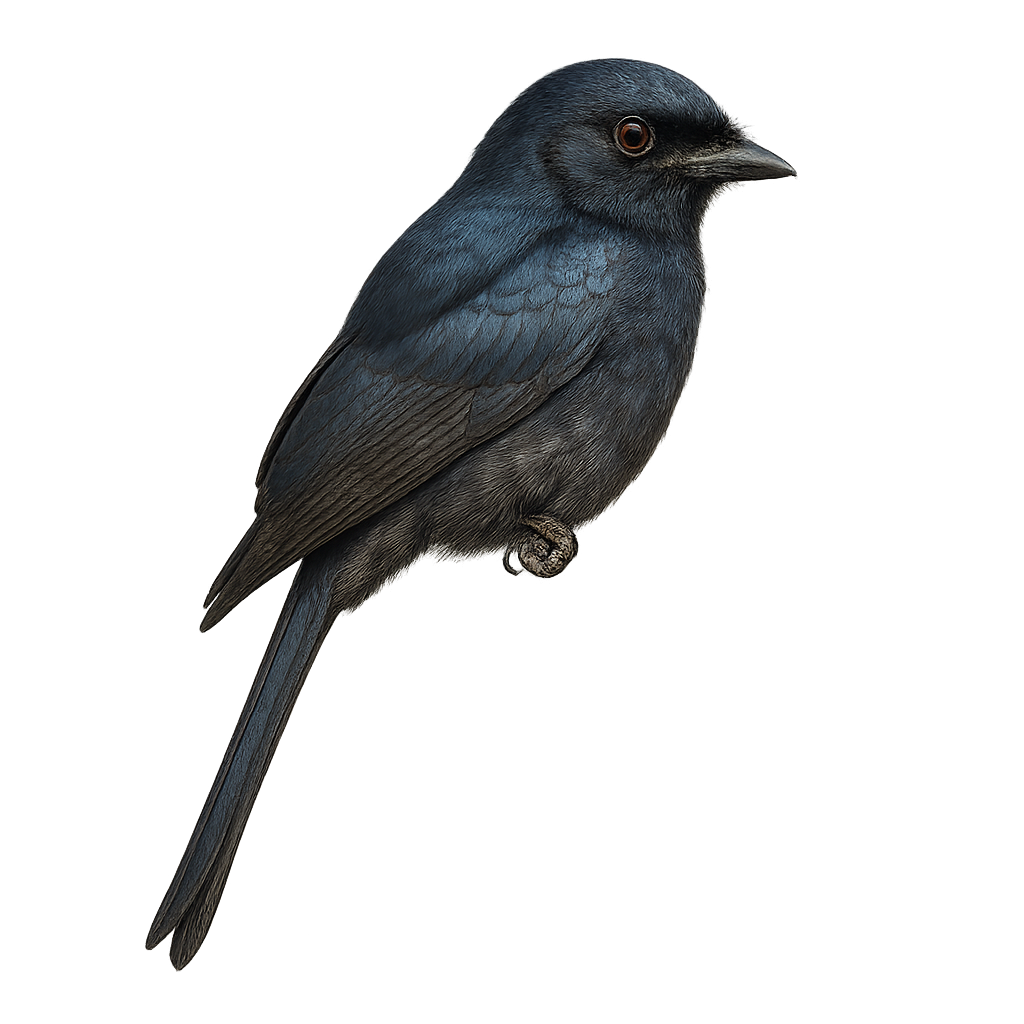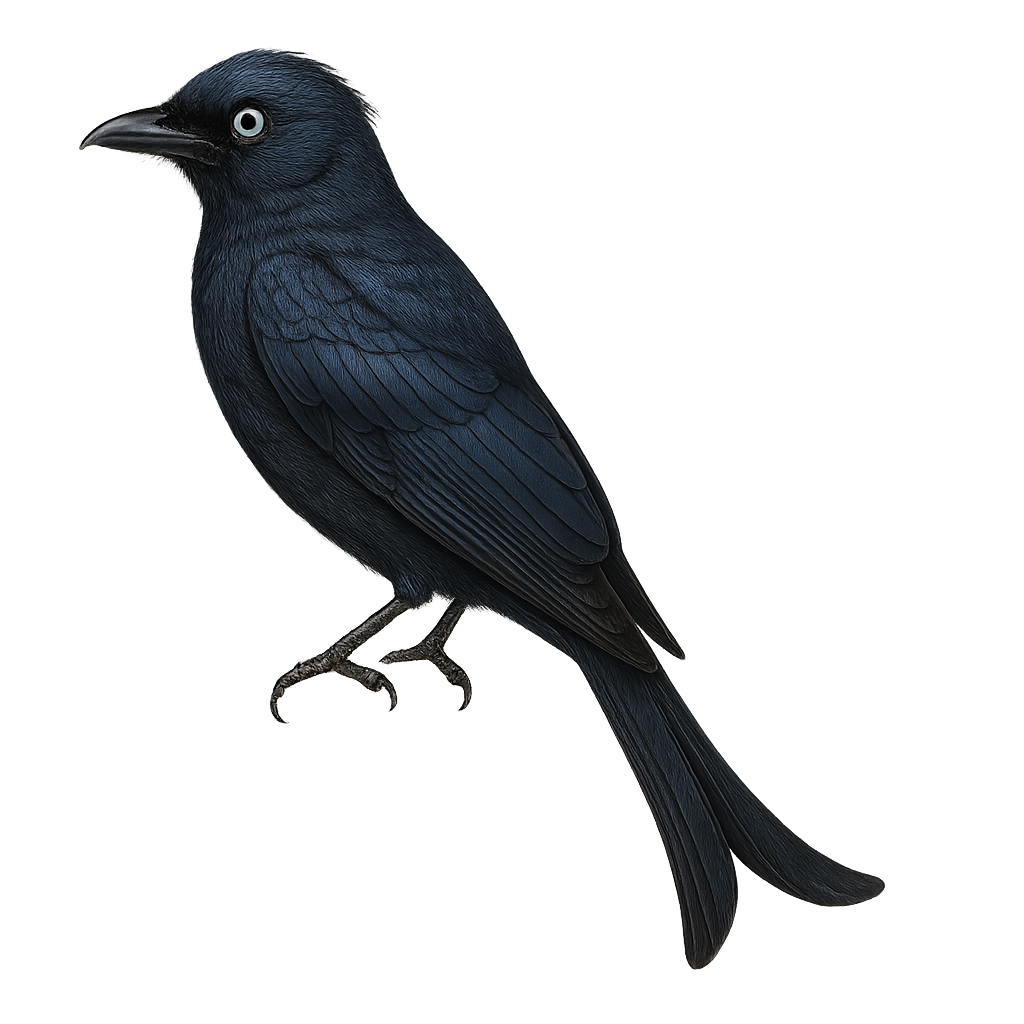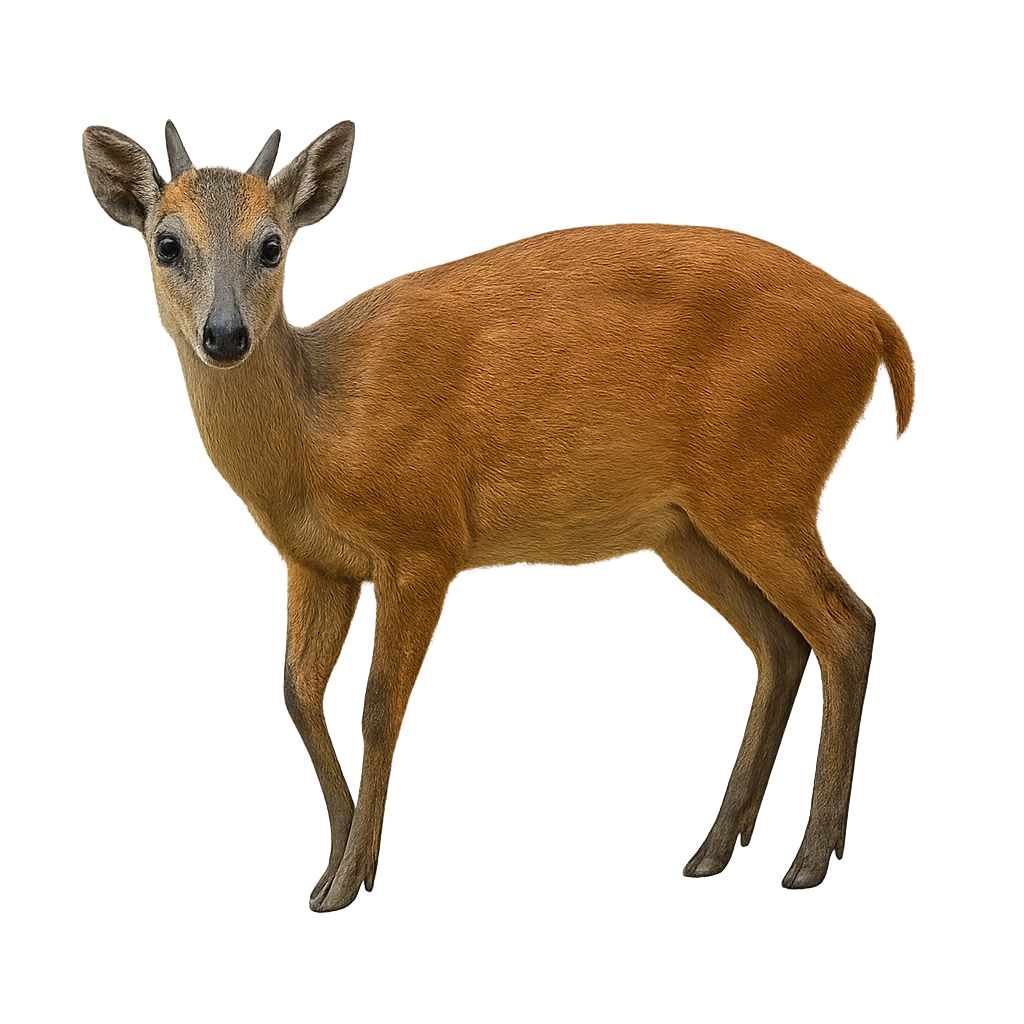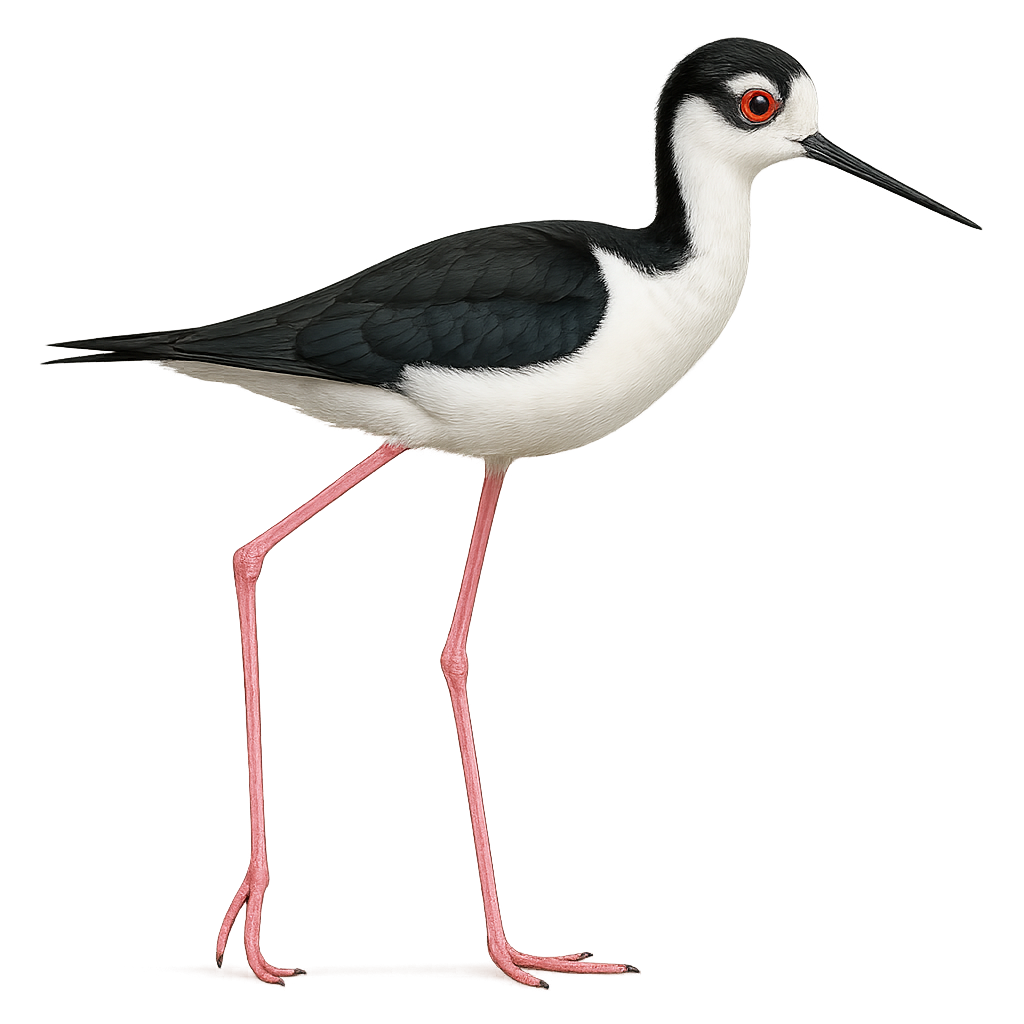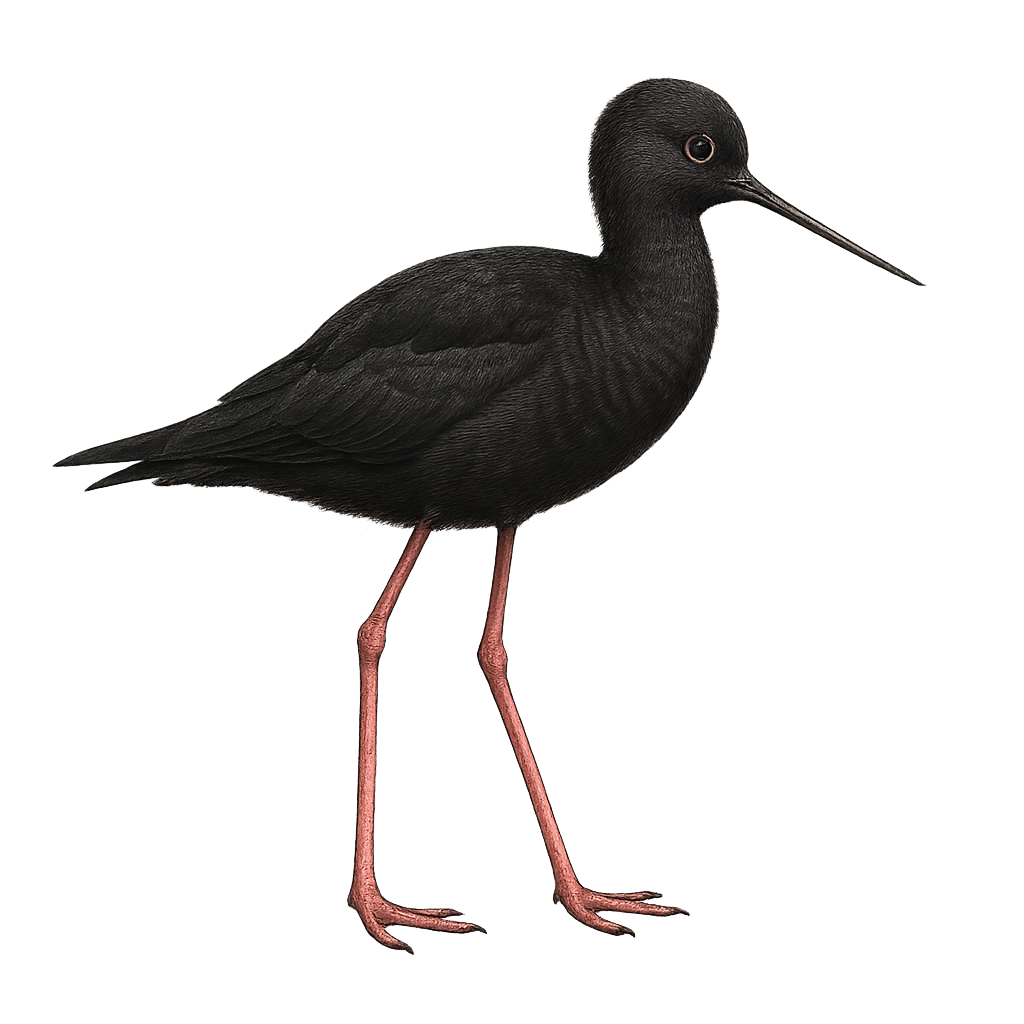The Doris Swanson's Poison Frog, Andinobates dorisswansonae, is a fascinating species from the Dendrobatidae family. Endemic to the humid rainforests of Colombia, it primarily inhabits dense undergrowth and areas near water streams. This small frog, measuring about 2 cm, is renowned for its bright coloration, ranging from yellow to red, serving as a warning signal to potential predators. Indeed, it secretes powerful toxins through its skin, a common trait among poison frogs. Its behavior is generally suspicious, making it difficult to observe in its natural habitat. It plays a crucial role in the ecosystem by regulating insect populations. Unfortunately, it is threatened by deforestation and habitat loss.
The Mountain Shrike-Tyrant, or Agriornis montanus, is a medium-sized bird belonging to the Tyrannidae family. It is primarily found in the mountainous regions of South America, particularly in the Andes. This bird is characterized by its gray-brown plumage, with lighter shades on the belly and slightly darker wings. It has a sturdy beak, adapted to its diet mainly consisting of insects and small invertebrates. The Mountain Shrike-Tyrant is often seen perched on branches or rocks, from where it monitors its territory. Its song is discreet but plays an important role in communication between individuals. Although relatively tolerant of human presence, it prefers less frequented areas.
The bearded dragon (Pogona vitticeps) is a medium-sized diurnal lizard (20–60 cm total length, including tail) with a broad triangular head and spiny scales around its throat. Native to central Australia’s arid regions, it inhabits savannas, rocky outcrops and semi-desert areas, feeding on insects, small vertebrates and plant matter. During the breeding season (September 1–February 28), males bob their beards and perform lateral shuffles to court females, which lay clutches of 15–30 eggs buried in sand. Hatchlings emerge between November 15 and April 15 after a 60–75-day incubation.
The Pogona barbata, commonly known as the Eastern Bearded Dragon, is a lizard native to Australia. It is recognizable by its "beard" of spines under the throat, which it can inflate to ward off predators or rivals. This diurnal reptile is often found in open forests, grasslands, and shrublands. It can reach a length of 60 cm, including the tail. Its diet is omnivorous, consisting of insects, small animals, and vegetation. The Pogona barbata is popular as a pet due to its generally docile nature and adaptability to captivity.
The Asian water monitor is a large lizard belonging to the monitor family. It is widely distributed across Southeast Asia and primarily inhabits wetland areas, particularly near rivers, swamps, and lakes. A carnivore, it feeds mainly on fish, amphibians, small mammals, and insects. Capable of swimming and climbing with agility, it is an excellent predator. While not considered threatened, it faces threats due to habitat loss and hunting.
This semi-aquatic varanid lizard can reach 1.2 m in length, with a robust dark brown body marked by yellow crossbars. It inhabits humid forests and mangrove swamps of Southeast Asia, feeding mainly on crabs, molluscs and small vertebrates. During breeding, females dig burrows to lay clutches of 4–23 eggs.
The Gila monster is a large venomous lizard, reaching 30–56 cm in length, with a robust body and bead-like scales patterned in yellow, pink, and black. Native to the deserts of the Southwestern United States and northern Mexico, it inhabits scrubland, succulent desert, and oak woodland, feeding mainly on small mammals, birds, and eggs. As the breeding season (April to June) approaches, males become territorial and exhibit dominance displays by lifting their bodies and bobbing their heads before mating.
The Komodo Dragon is a large carnivorous lizard, famous for its impressive size and strength. It typically measures between 2 and 3 meters in length and can weigh up to 70 kg. Its massive body is covered with scales, usually grayish-green, which helps it blend into its natural environment. The Komodo Dragon is found exclusively on a few islands in Indonesia, including Komodo, Rinca, Flores, and Gili Motang. This apex predator feeds on a variety of animals, from birds to mammals like deer, as well as carrion. It primarily hunts using its developed sense of smell, able to detect odors from several kilometers away. Due to its powerful bite and saliva filled with bacteria, the Komodo Dragon can incapacitate its prey and wait for it to succumb to infection before feeding. The species is listed as vulnerable, threatened by habitat loss, illegal hunting, and excessive tourism. Conservation efforts are in place to protect this unique creature and its habitat.
Drill
Mandrillus leucophaeus
The Mandrillus leucophaeus, commonly known as the drill, is a primate from the Cercopithecidae family. It is characterized by its dark fur and colorful face, with shades of blue and pink around the nose. Males are significantly larger than females, weighing up to 30 kg. They primarily inhabit the tropical forests of Cameroon, Nigeria, and Equatorial Guinea. Drills are social animals, living in groups led by a dominant male. Their diet mainly consists of fruits, leaves, and insects. Unfortunately, this species is threatened by deforestation and hunting, leading to a significant decline in its population.
The dromedary, Camelus dromedarius, is a large mammal with a single hump, well adapted to arid and desert environments. Originally from the Arabian Peninsula, it is now widely domesticated and used as a pack and transport animal in many regions of the Middle East and North Africa. Its hump, made of fat, allows it to survive long periods without water. The dromedary has a distinctive gait, moving at a steady pace over long distances. Its thick skin and closable nostrils protect it from sandstorms. Dromedaries are herbivores that primarily feed on dry and thorny vegetation.
The Greater Racket-tailed Drongo, or Dicrurus paradiseus, is a striking bird known for its long tail feathers shaped like rackets. It is predominantly black with metallic blue and green sheen, and features a distinctive crest on its head. This bird is renowned for its intelligence and ability to mimic the sounds of other birds and animals. It inhabits the tropical and subtropical forests of South and Southeast Asia, where it primarily feeds on insects. The Greater Racket-tailed Drongo is often seen following groups of primates to catch insects disturbed by their movement. It is also territorial and can be aggressive towards intruders.
The Fork-tailed Drongo, Dicrurus adsimilis, is a medium-sized bird known for its glossy black plumage and distinctive forked tail. It is commonly found in open forests, savannas, and agricultural areas across sub-Saharan Africa. This drongo is noted for its bold and aggressive behavior, often attacking larger predators to defend its territory. It primarily feeds on insects but can also consume small vertebrates. Its varied and melodious song is often heard at dawn and dusk. The Fork-tailed Drongo is also famous for its ability to mimic the calls of other birds, allowing it to deceive competitors and steal their food.
The Nicobar Drongo, scientifically known as Dicrurus fuscipennis, is a medium-sized bird endemic to the Nicobar Islands in the Indian Ocean. It is characterized by its glossy black plumage and long forked tail. This bird primarily inhabits the tropical rainforests of these islands, where it feeds on insects and small invertebrates. The Nicobar Drongo is known for its territorial behavior and its ability to mimic the sounds of other birds, which helps it deceive predators and protect its territory. Although its habitat is limited, it is not currently considered threatened, but deforestation could pose a long-term risk.
The Black Drongo, Dicrurus macrocercus, is an elegant and agile bird, easily recognizable by its glossy black plumage and long forked tail. This passerine is widely distributed in South and Southeast Asia, where it inhabits various environments such as open fields, light forests, and agricultural areas. Known for its aggressive behavior, it does not hesitate to chase away larger predators to protect its territory. The Black Drongo is also an excellent mimic of sounds, allowing it to deceive other species. Its diet mainly consists of insects, which it catches in flight thanks to its remarkable aerial abilities.
The Crowned Woodnymph, or Thalurania colombica, is a vibrant hummingbird found primarily in the humid forests of Central and South America. This small bird, measuring about 9 to 11 cm, is known for its iridescent plumage. Males display a striking blue-violet head and throat, with a bright green back. Females, on the other hand, have more subdued green and gray tones. This hummingbird is a crucial pollinator, feeding mainly on nectar but also on small insects. It is often seen hovering near flowers, using its long bill to access nectar. Although its habitat is threatened by deforestation, it remains relatively common in protected areas.
The Dormouse with a Bushy Tail is a small nocturnal rodent, easily recognizable by its large bushy tail, which is one of its distinctive features. It measures about 20 to 25 cm in length, with a tail of around 10 to 15 cm, and weighs between 50 and 150 g. Its coat is generally gray or brown, with a lighter shade on the belly, and it has large round ears and bright eyes. The Dormouse with a Bushy Tail primarily lives in forests, hedgerows, and gardens, where it feeds on fruits, seeds, nuts, as well as small creatures like insects. It is mainly active at night, taking refuge in tree holes or burrows during the day. This rodent hibernates during the winter, entering a state of torpor for several months, which allows it to survive the cold temperatures. While the species is not currently endangered, it faces threats from deforestation and the reduction of its natural habitat.
The green tree frog, Hyla cinerea, is a small arboreal frog native to North America. It is characterized by its bright green color, sometimes adorned with white or golden spots. Its skin is smooth, and it has long limbs adapted for climbing. Measuring about 4 to 6 cm, it is often found near stagnant water bodies like marshes and ponds. Primarily nocturnal, it emits a distinctive call during the breeding season. Although common, it is sensitive to environmental changes, particularly water pollution and habitat destruction.
The common duiker, or Sylvicapra grimmia, is a small African antelope found in various regions across the continent. It is characterized by its modest size, reaching about 50 cm at the shoulder, and its grayish-brown coat that allows it to blend into its surroundings. Males have small, straight horns, while females are hornless. This animal is primarily solitary, although it can sometimes be seen in small family groups. It is highly adaptable, living in diverse habitats ranging from savannas to sparse forests. The duiker is an opportunistic herbivore, feeding on leaves, fruits, and sometimes bark. Its ability to survive in varied environments makes it a resilient species.
The Cephalophus natalensis, or Natal Red Duiker, is a small African antelope that primarily inhabits dense forests and wooded areas in eastern South Africa. It is distinguished by its reddish coat, slender legs, and short, straight horns. This discreet mammal stands about 40 to 50 cm at the shoulder and weighs between 12 and 14 kg. It is mainly active at dawn and dusk, feeding on leaves, fruits, and flowers. The Natal Red Duiker is known for its shy nature and ability to blend into its environment to escape predators. Its population is stable, although deforestation poses a potential threat.
The Dugong is a marine mammal and herbivore primarily found in warm, shallow coastal waters of the Indian Ocean and Pacific. Closely related to manatees, it is more agile, with a streamlined body designed for swimming. The Dugong feeds on seagrasses, primarily seagrass species, which it pulls from the ocean floor. Although a protected species, the Dugong is threatened by habitat loss, pollution, accidental fishing, and climate change.
The Black-winged Stilt is an elegant wader bird, easily recognized by its long, slender legs and bright white plumage. Measuring around 35 to 40 cm in length and with a wingspan of 70 to 80 cm, this bird is distinguished by its fine, straight black beak, which is slightly upturned. The Black-winged Stilt primarily inhabits wetlands, marshes, shallow rivers, and ponds across Europe, Asia, and North Africa. It mainly feeds on aquatic insects, crustaceans, and small fish, which it catches by walking in shallow water and probing with its beak. This wader is particularly known for its graceful way of moving on its long legs, often walking slowly in the water or performing elegant hops. During the breeding season, the Black-winged Stilt builds its nest on isolated islands or sandbanks, where females lay 3 to 4 eggs. The species is listed as of least concern, although it is vulnerable to habitat loss and water pollution.
The Black-necked Stilt is an elegant and graceful bird, easily recognizable by its long red legs and distinctive black and white plumage. It primarily inhabits wetlands, marshes, and shallow ponds where it feeds on small invertebrates and crustaceans. This bird is often seen in small groups but can also be solitary. Its slender silhouette and delicate movements make it a fascinating sight for birdwatchers and nature enthusiasts. Although its range is primarily in America, it is sometimes observed in other regions during migrations. Its ability to adapt to various wetland habitats makes it a resilient species, although some populations are threatened by habitat loss.
The Black Stilt, or Himantopus novaezelandiae, is a wading bird endemic to New Zealand. It is characterized by its uniform black plumage, long red legs, and slender black bill. This rare and endangered bird prefers aquatic habitats such as lakes, rivers, and marshes. Its population is declining due to predation by introduced species and habitat loss. Conservation efforts include protecting breeding sites and captive breeding programs. The Black Stilt is a symbol of New Zealand's unique biodiversity and the importance of conserving endangered species.
The Red-browed Treecreeper, or Climacteris erythrops, is a bird endemic to Australia, primarily found in eucalyptus forests. It is recognized by its reddish-brown plumage and distinctive red eyebrows. Measuring about 17 cm, it is often seen climbing tree trunks in search of insects and spiders. Its song is a melodious trill, often heard at dusk. Although discreet, it is sometimes observed in small family groups. Its ability to blend into its environment makes it difficult to spot, but its curious behavior and distinctive song are valuable clues for attentive observers.
The Black Cuckooshrike, or Campephaga flava, is a medium-sized bird, predominantly black with bluish sheen in males, while females have duller, often brownish, streaked plumage. It is mainly insectivorous, feeding on caterpillars and other insects found in trees and shrubs. This bird is often seen alone or in pairs and is known for its melodious and varied song. It primarily inhabits wooded savannas, open forests, and shrublands in sub-Saharan Africa. Although quite discreet, it can be spotted by its distinctive song.
The Black-winged Cuckooshrike is a medium-sized bird known for its distinctive grey and black plumage. It primarily inhabits tropical and subtropical forests, where it feeds on insects and fruits. This bird is often seen in small groups or pairs, actively moving through the canopy in search of food. Its ability to blend into its environment with its dark plumage sometimes makes it difficult to spot. Although not endangered, deforestation poses a potential risk to its natural habitats. It is appreciated by birdwatchers for its melodious song and discreet presence.
The short-beaked echidna is a small monotreme mammal, 30–45 cm long, covered in spines with an elongated head bearing a long tubular snout. Endemic to Australia and New Guinea, it inhabits forests, scrublands and open areas, feeding mainly on ants and termites with its fast, sticky tongue. Solitary, it alternates nocturnal and crepuscular activity phases to avoid heat.
The Western Long-beaked Echidna, or Zaglossus bruijni, is a fascinating mammal native to New Guinea. It is distinguished by its long snout and dorsal spines, similar to those of a hedgehog. This animal is a monotreme, meaning it lays eggs while being a mammal. It primarily feeds on earthworms and insects, which it finds using its sensitive snout. The Western Long-beaked Echidna is a solitary and discreet animal, living in dense forests and mountainous regions. Unfortunately, it is threatened by habitat loss and hunting, making it critically endangered according to the IUCN.
The Caucasian squirrel, or Sciurus anomalus, is a small tree-dwelling rodent found mainly in the deciduous and mixed forests of the Middle East, particularly in Turkey, Iran, and parts of the Caucasus. It is characterized by its reddish-brown fur, bushy tail, and ears adorned with small tufts of hair. Primarily active during the day, it spends much of its time climbing trees in search of food, mainly seeds, nuts, and fruits. Although generally solitary, it can sometimes be seen in small groups, especially during the breeding season. Its ability to adapt to different habitats allows it to survive in various environments, although deforestation poses a threat to its populations.
The Indian Giant Squirrel, Ratufa indica, is an impressive rodent known for its size and vibrant colors. It can grow up to a meter long, including its tail, and sports a coat with varying shades from brown to black, with hints of cream and rust. This squirrel is arboreal, spending most of its time in the trees of India's tropical rainforests. It primarily feeds on fruits but also consumes flowers, bark, and insects. Its behavior is generally solitary, although it can be seen in pairs during the breeding season. With its long tail, it maintains perfect balance when leaping from tree to tree.


